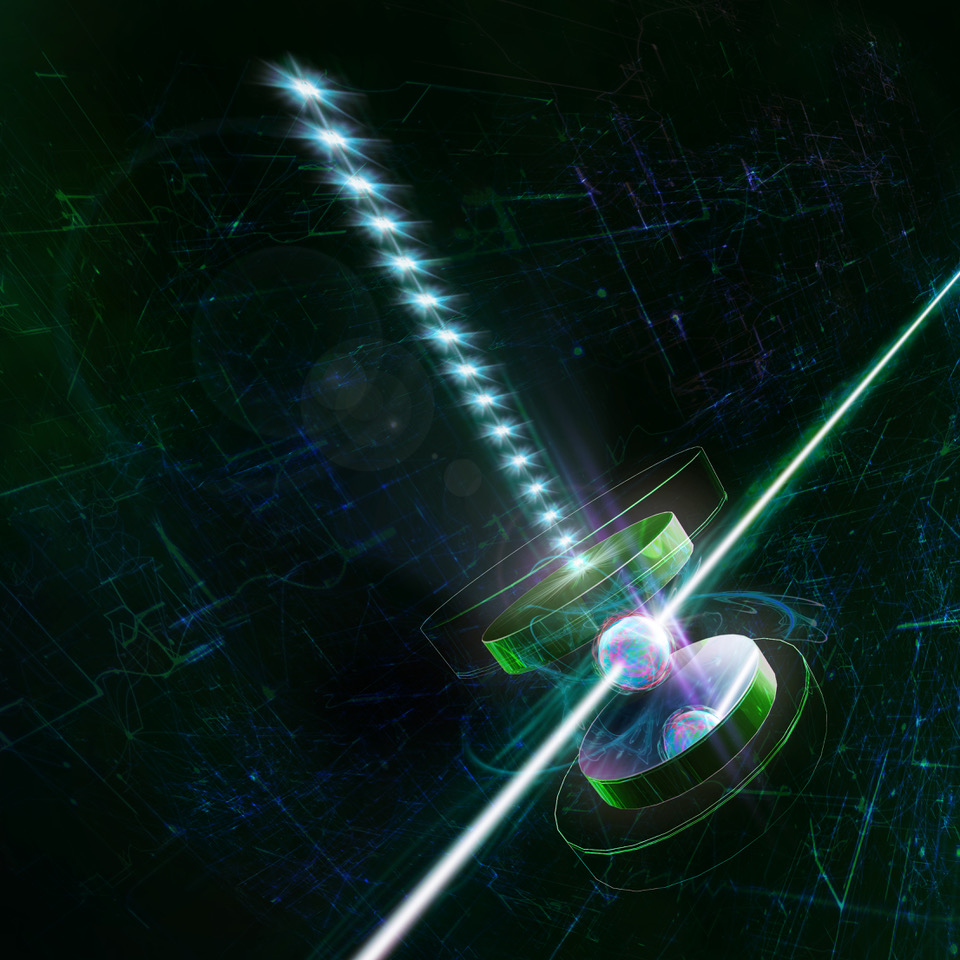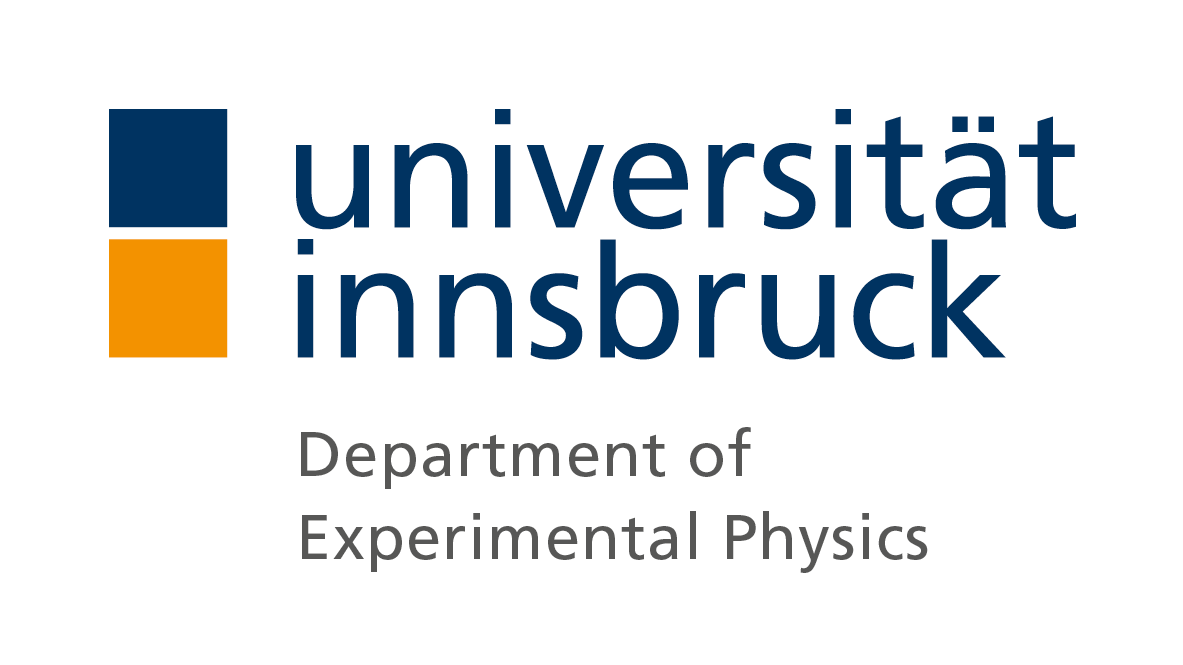
Image: a train of single photons is emitted from a single atom between two mirrors. (Credit: Harald Ritsch)
A quantum version of the internet, built of interacting quantum light and matter, would enable powerful new capabilities for science and technology. A key requirement for the quantum internet is the ability to efficiently collect photons that are emitted by and entangled with quantum matter. In our paper (link) published in PRX Quantum, we report on a significant increase in the efficiency of entangled photon collection from a leading example of quantum matter: a single trapped atomic ion. The achieved performance opens up new near-term methods for engineering and studying many-particle quantum states.
Our system, consisting of a trapped ion in the focus of an optical cavity, achieves close to the optimal compromise between the probability of a photon being emitted into the cavity mode and exiting through the output mirror. Furthermore, the achieved performance is shown to saturate recently-developed theoretical limits, set only by the cavity and emitter parameters, allowing the paths to future efficiency improvements to be clearly identified. The comparison between measured probabilities and theoretical limits is relevant for quantum emitters beyond trapped ions, in particular, for the design of future systems optimising photon collection from, and absorption in, quantum matter.
An intriguing outlook is to combine the multi-qubit quantum-logic capabilities of the trapped-ion platform with the high-efficiency photon generation achieved in this work, to generate new many-body light-matter quantum states with widespread application. Indeed, as a first step in that direction we demonstrate here the detection of up to 15 sequential photons.
Links:

